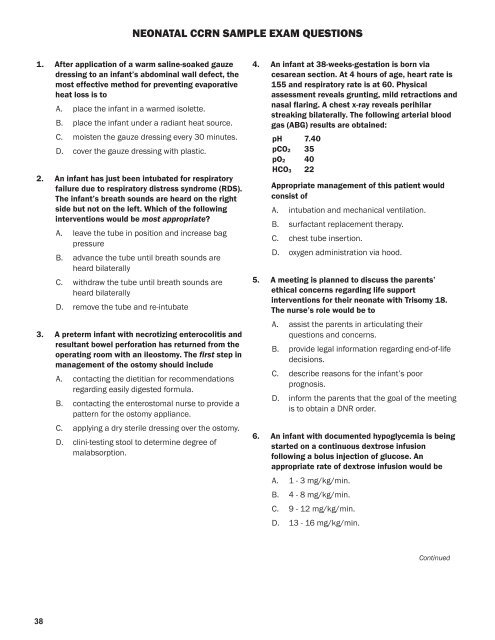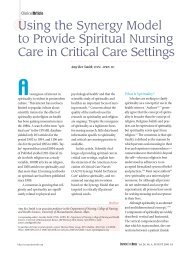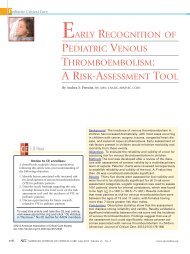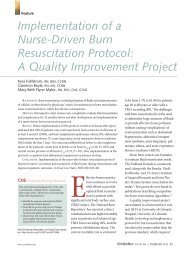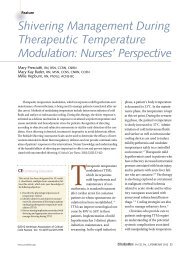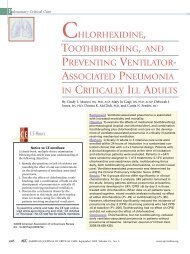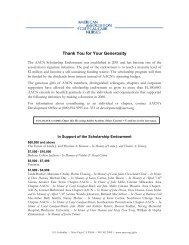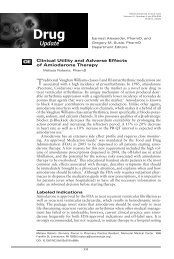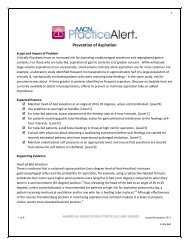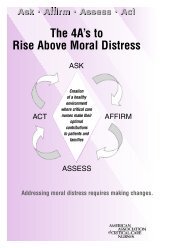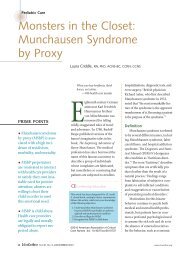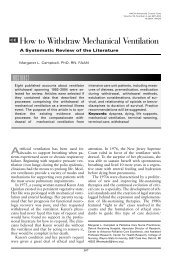CCRN/PCCN Exam Handbook - American Association of Critical ...
CCRN/PCCN Exam Handbook - American Association of Critical ...
CCRN/PCCN Exam Handbook - American Association of Critical ...
You also want an ePaper? Increase the reach of your titles
YUMPU automatically turns print PDFs into web optimized ePapers that Google loves.
38<br />
neonAtAL CCRn sAMPLe eXAM QUestIons<br />
1. After application <strong>of</strong> a warm saline-soaked gauze<br />
dressing to an infant’s abdominal wall defect, the<br />
most effective method for preventing evaporative<br />
heat loss is to<br />
a. place the infant in a warmed isolette.<br />
b. place the infant under a radiant heat source.<br />
C. moisten the gauze dressing every 30 minutes.<br />
D. cover the gauze dressing with plastic.<br />
2. An infant has just been intubated for respiratory<br />
failure due to respiratory distress syndrome (RDS).<br />
The infant’s breath sounds are heard on the right<br />
side but not on the left. Which <strong>of</strong> the following<br />
interventions would be most appropriate?<br />
a. leave the tube in position and increase bag<br />
pressure<br />
b. advance the tube until breath sounds are<br />
heard bilaterally<br />
C. withdraw the tube until breath sounds are<br />
heard bilaterally<br />
D. remove the tube and re-intubate<br />
3. A preterm infant with necrotizing enterocolitis and<br />
resultant bowel perforation has returned from the<br />
operating room with an ileostomy. The first step in<br />
management <strong>of</strong> the ostomy should include<br />
a. contacting the dietitian for recommendations<br />
regarding easily digested formula.<br />
b. contacting the enterostomal nurse to provide a<br />
pattern for the ostomy appliance.<br />
C. applying a dry sterile dressing over the ostomy.<br />
D. clini-testing stool to determine degree <strong>of</strong><br />
malabsorption.<br />
4. An infant at 38-weeks-gestation is born via<br />
cesarean section. At 4 hours <strong>of</strong> age, heart rate is<br />
155 and respiratory rate is at 60. Physical<br />
assessment reveals grunting, mild retractions and<br />
nasal flaring. A chest x-ray reveals perihilar<br />
streaking bilaterally. The following arterial blood<br />
gas (ABG) results are obtained:<br />
pH 7.40<br />
pCO2 35<br />
pO2 40<br />
HCO3 22<br />
Appropriate management <strong>of</strong> this patient would<br />
consist <strong>of</strong><br />
a. intubation and mechanical ventilation.<br />
b. surfactant replacement therapy.<br />
C. chest tube insertion.<br />
D. oxygen administration via hood.<br />
5. A meeting is planned to discuss the parents’<br />
ethical concerns regarding life support<br />
interventions for their neonate with Trisomy 18.<br />
The nurse’s role would be to<br />
a. assist the parents in articulating their<br />
questions and concerns.<br />
b. provide legal information regarding end-<strong>of</strong>-life<br />
decisions.<br />
C. describe reasons for the infant’s poor<br />
prognosis.<br />
D. inform the parents that the goal <strong>of</strong> the meeting<br />
is to obtain a DNr order.<br />
6. An infant with documented hypoglycemia is being<br />
started on a continuous dextrose infusion<br />
following a bolus injection <strong>of</strong> glucose. An<br />
appropriate rate <strong>of</strong> dextrose infusion would be<br />
a. 1 - 3 mg/kg/min.<br />
b. 4 - 8 mg/kg/min.<br />
C. 9 - 12 mg/kg/min.<br />
D. 13 - 16 mg/kg/min.<br />
Continued


